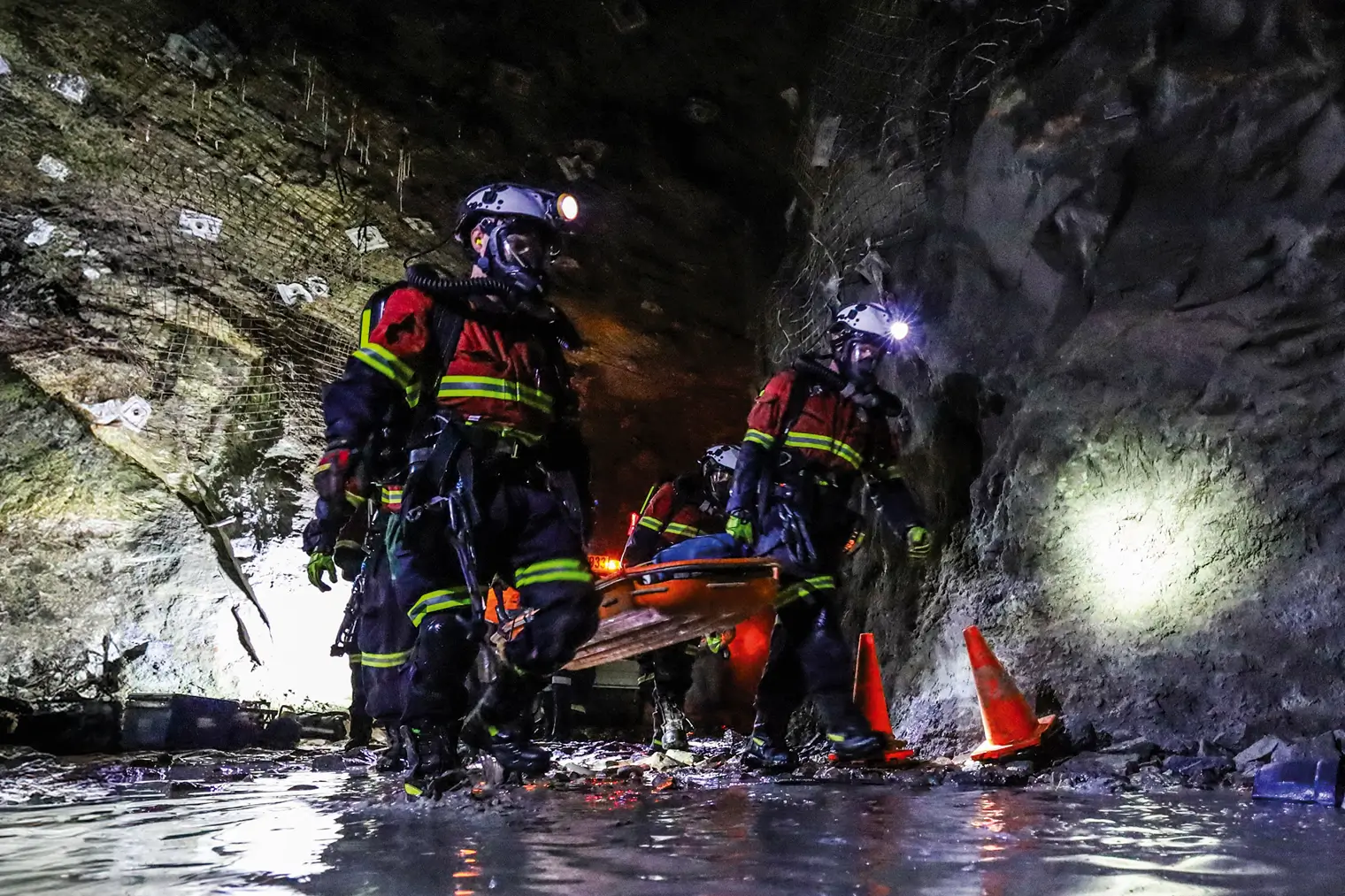Home » All Issues » Issue 4 » CME Emergency Response Competition
CME Emergency Response Competition
Safety below the surface
Australia boasts one of the biggest mining sectors in the world. While it’s the country’s largest export industry, it’s also one of the most dangerous. Hundreds of metres below ground, workers are faced with life-threatening hazards, including dangerous gases, fires and cave-ins.
When an unexpected crisis hits, how workers respond in an emergency can be the difference between life and death. Since 1903, Western Australia’s Chamber of Minerals and Energy (CME) and the Mines Rescue Committee have delivered the Mine Emergency Response Competitions.
These events play a crucial role in providing mining crews with a chance to hone their skills in the face of an emergency.
For the last three years, competition coordinator Karlee Andrzejeski has led the charge in pulling together the various elements for the competitions. For her, the value of these events hits close to home.
“My husband works in the mines. If something ever went wrong, I would hope the emergency response team – the ERT – on site would have the right skills and training to make sure everyone involved made it out safely,” Karlee shares.
“When you’re underground, it’s the ERT on that mine site who are responding to an incident before any emergency services, so these first moments are critical.”
Karlee first set foot in an underground mine last year to get a sense of what crews experience firsthand. “I didn’t feel scared as I was with the right people, but it’s a different atmosphere down there. It’s not for the fainthearted and if you are claustrophobic, it’s not where you want to be.” There are two Mine Emergency Response Competitions annually – the Surface Mine Emergency Response Competition (SMERC) and the Underground Mine Emergency Response Competition (UMERC). Each event features a range of simulated situations which prompt teams to determine how best to respond under pressure.

There are eight events in UMERC: firefighting, search and rescue, breathing apparatus, theory exam, team skills, rope rescue, first aid and incident management.
While Karlee coordinates the overall competition, it’s the event manager for each event who plans the specifics of the scenario along with guidance and final sign-off from the chairman, host mine and chief adjudicators.
“The event management team spend months crafting the situations, but they don’t start building the scenarios until a week or two before the competition starts,” Karlee explains. “These industry professionals have a lot of experience in the mines and in emergency rescue. There are multiple checks and tweaks that go into any one drill.
“The drills must adhere to all the same safety requirements as you would in a regular mine. We don’t get a final risk assessment until the day of competition, and the team is down there building the scenarios until the night before.” Each year, the team develops a new scenario based on a real crisis that has occurred at a mining site or something that has a high possibility of happening on site.
“On the Friday night, before the competition starts, the captains receive a quick briefing on each event, but it’s up to the teams to come together on the day to figure out the best possible solution.” Admitting it sounds a little cliché, Karlee says the camaraderie and learning aspect of these competitions is the best part.
“While each team is competing against each other, the knowledge sharing between them is incredible.” This sentiment resonates with FMR Investment’s mine manager, John Farr.
“We first entered the competition a couple of years ago and immediately saw the advantages of our team experiencing real-life scenarios that have actually happened at other mine sites,” John says.
“Assisting our operations, we have a fleet of six Kubota RTV-X1140s, which are used as an everyday utility vehicle underground. We have fitted out four of these so they can be converted into emergency response vehicles, which include custom-fitted stretchers and first aid gear.

"I WAS TOLD IT COULDN’T BE DONE... BUT IT CAN BE DONE"

“This gives us the ability to quickly respond to incidents, known as surge capacity, as well as maintaining the vehicles’ day-to-day functionality. As a result, we are better equipped to attend any situation.” Since purchasing their first three vehicles two years ago, John says the team hasn’t looked back. “The Kubota’s have a smaller turning circle and are narrower than other vehicles underground, which is so important down in the mines where you’re navigating tight spaces. The air intake is a lot lower too. This is critical in an emergency because smoke rises, so the Kubota can be used to get to a fire,” he explains.
“Our experience with the team at E & MJ Rosher Kenwick has been great, and we were able to modify the vehicles to suit our individual requirements, which was a big tick. We’ve been so pleased with our Kubota RTV fleet.” The Kubota RTV’s played an important role in all the underground response scenarios at the 2023 competition. According to John, it’s a great way to show other mines how valuable motorised rescue can be when faced with an emergency.
“We look forward to continuing to share our safety methods with others while learning skills from other teams in the region. If we work together as a sector, we can build a safer industry for us all. That’s what these competitions are all about.”